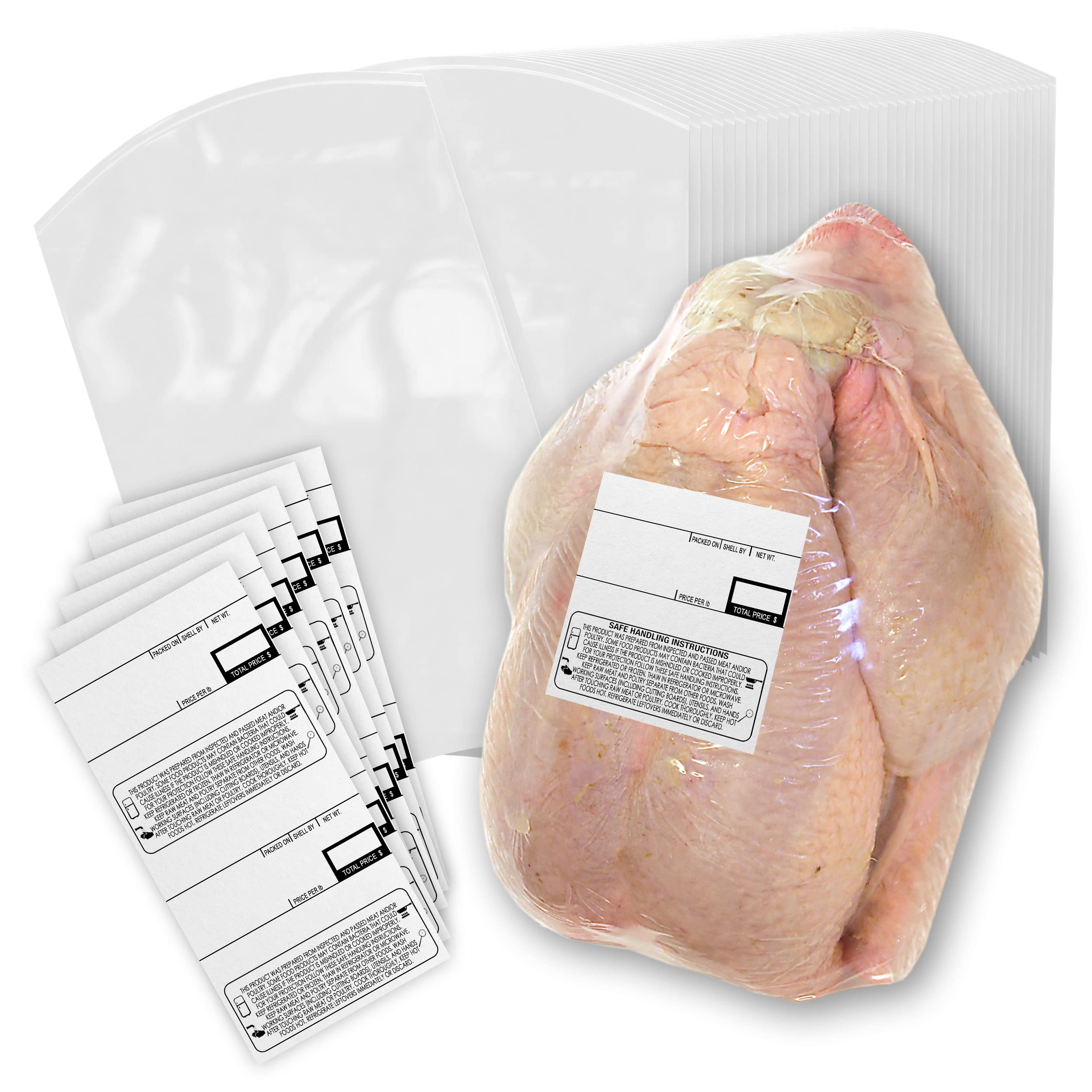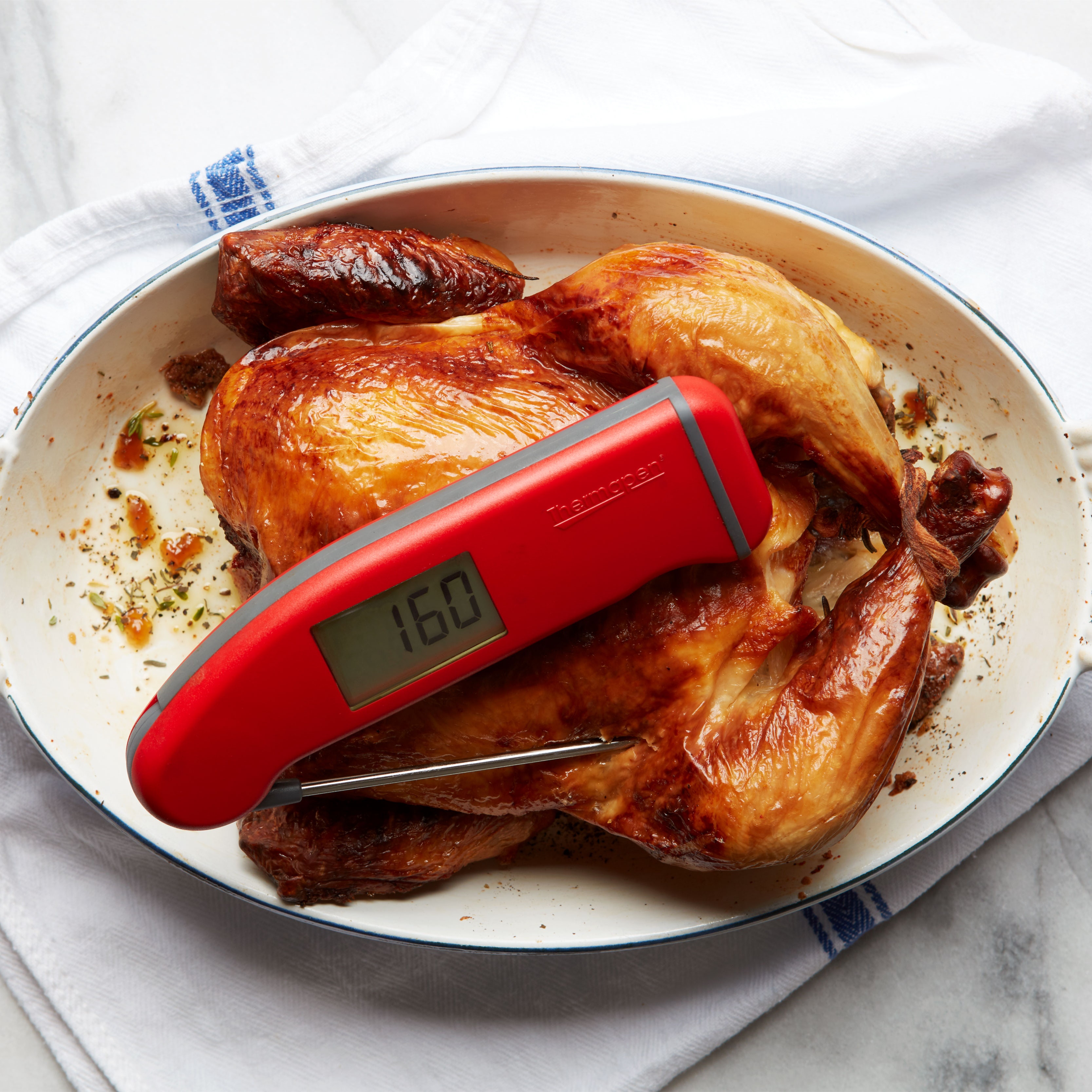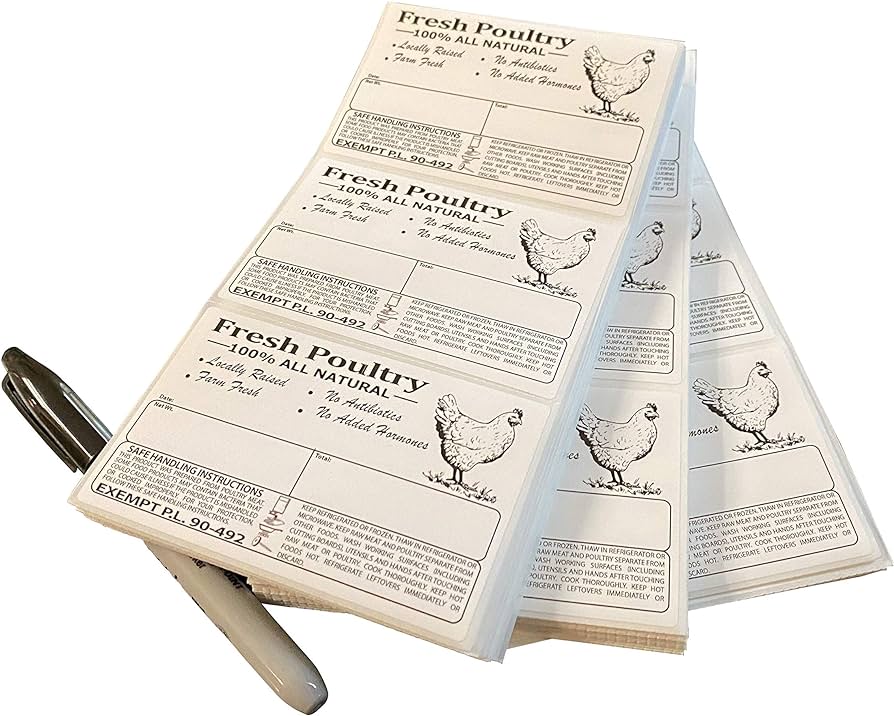
Introduction
The Importance Of Poultry Safety Guidelines
Poultry safety is of utmost importance to ensure the well-being and health of consumers. It is crucial to follow proper guidelines and regulations to prevent the risk of foodborne illnesses. While federal regulations do not require product dating for poultry, many stores and processors voluntarily date packages to provide consumers with information about the freshness and quality of the product.
The Significance Of Adhering To Use Or Freeze By Dates
When purchasing poultry products, consumers should pay attention to the use or freeze by dates provided on the packaging. These dates are determined by the manufacturer to ensure peak quality and freshness. It is recommended to use or freeze the product within one or two days of purchase.
If the use-by date specified by the manufacturer has not been reached, it is always best to buy the product before it expires. This allows consumers to ensure they are consuming poultry products at their freshest. Even if the date expires after the poultry is frozen, it can still be safely consumed. Freezing helps to preserve the quality and taste of the product.
Adhering to use or freeze by dates is essential for maintaining food safety and minimizing the risk of foodborne illnesses. Consuming poultry products after these dates can increase the chances of consuming spoiled or contaminated food, which can have adverse health effects.
It is important for consumers to read and understand the meaning of the dates provided on poultry packaging. Calendar dates should be accompanied by a phrase explaining their significance. This ensures that consumers are well-informed and can make informed decisions to protect their health and well-being.
In conclusion, while federal regulations may not mandate product dating for poultry, it is still crucial for consumers to pay attention to use or freeze by dates. These dates are determined by manufacturers to ensure peak quality and freshness. By following these guidelines, consumers can enjoy safe and healthy poultry products.
Storing Chicken Properly
Refrigeration Guidelines For Chicken
- To ensure the safety and quality of chicken, it is important to store it properly in the refrigerator. Follow these guidelines:
- Temperature: Set your refrigerator temperature to 40°F (4°C) or below to inhibit the growth of bacteria.
- Packaging: Store chicken in the original packaging or transfer it to a clean, airtight container. This will prevent cross-contamination with other foods and minimize the risk of spoilage.
- Placement: Place raw chicken on the bottom shelf of the refrigerator to prevent any juices from dripping onto other foods.
- Duration: Chicken can be stored in the refrigerator for up to 2 days before cooking or freezing.
Freezing Chicken For Long-term Storage
- Freezing chicken is a great way to extend its shelf life and maintain its quality. Follow these guidelines for safe storage in the freezer:
- Packaging: Use airtight freezer bags or wrap chicken tightly in aluminum foil or plastic wrap. This will prevent freezer burn and maintain freshness.
- Labeling: Always label the packaging with the date of freezing to keep track of how long the chicken has been frozen.
- Temperature: Set your freezer temperature to 0°F (-18°C) or below to ensure proper freezing and prevent the growth of bacteria.
- Duration: Chicken can be frozen for up to 9 months, but it is best to consume it within 3-4 months for optimal taste and quality.
- Thawing: When ready to use, thaw chicken in the refrigerator or using the defrost setting on your microwave. Avoid thawing at room temperature to prevent bacterial growth.
By following these guidelines, you can ensure the safety and quality of your chicken during storage. Proper refrigeration and freezing techniques will help you enjoy delicious and safe meals made at home.
Determining The Freshness Of Chicken
Checking The Use Or Freeze By Date
To ensure you are buying fresh chicken, it is important to check the use or freeze by date on the packaging. If the date has not yet passed, the chicken is still considered fresh and safe to consume. It is always best to purchase a product before its date expires to ensure peak quality and freshness. Even if the date expires after the chicken has been frozen, it can still be used as long as it has been stored properly.
Examining The Quality Of Frozen Chicken
When purchasing frozen chicken, it is essential to examine its quality. Look for any signs of freezer burn, which appear as white or grayish spots on the surface of the chicken. Freezer burn can affect the texture and flavor of the chicken, so it is best to avoid purchasing chicken with these signs.
Additionally, check for any ice crystals or excessive moisture in the packaging. This indicates that the chicken may have thawed and refrozen at some point, compromising its quality. It is best to choose chicken that is properly sealed and shows no signs of thawing.
By checking the use or freeze by date and examining the quality of frozen chicken, you can ensure that you are buying fresh and high-quality poultry. Proper storage techniques, such as refrigeration or freezing, will also contribute to maintaining the safety and flavor of your chicken.

Cooking Chicken Safely
Internal Temperature Guidelines For Cooking Chicken
When it comes to cooking chicken, it is important to ensure that it is cooked to a safe internal temperature. The USDA recommends cooking whole poultry, such as chicken, to a minimum internal temperature of 165°F as measured using a food thermometer. This is to ensure that any harmful bacteria present in the chicken are killed, reducing the risk of foodborne illnesses.
Personal Preferences For Cooking Temperature
While the USDA recommends cooking chicken to a minimum internal temperature of 165°F, some individuals may have their own preferences for cooking temperature. Some people prefer their chicken to be slightly more well-done, while others may prefer it to be slightly less cooked. It is important to note that cooking chicken to a higher internal temperature may result in a drier texture, while cooking it to a lower temperature may not ensure complete elimination of bacteria. Therefore, it is essential to find a balance between personal preferences and food safety guidelines.
Overall, it is crucial to ensure that chicken is cooked to a safe internal temperature to prevent foodborne illnesses. By using a food thermometer to measure the internal temperature, individuals can ensure that their chicken is cooked thoroughly and safely.
Cooking Chicken Safely
Internal Temperature Guidelines For Cooking Chicken
When cooking chicken, it is essential to ensure that it is cooked to a safe internal temperature. The USDA recommends cooking whole poultry, such as chicken, to a minimum internal temperature of 165°F. This temperature should be measured using a food thermometer to ensure that any harmful bacteria in the chicken are killed, reducing the risk of foodborne illnesses.
Personal Preferences For Cooking Temperature
While the USDA recommends a minimum internal temperature of 165°F, some individuals may have their own preferences for cooking temperature. Personal preferences can influence how well-done or slightly less cooked they prefer their chicken. However, it is important to note that cooking chicken to a higher internal temperature may result in a drier texture, while cooking it to a lower temperature may not completely eliminate bacteria.
Approximate Cooking Times
Utilizing Cooking Time Charts For Meal Planning
For convenient meal planning, it can be helpful to refer to cooking time charts that provide approximate cooking times for different cuts of chicken. These charts are compiled from various reliable resources, ensuring that the information is accurate and trustworthy. By considering the cooking times, individuals can plan their meals accordingly and ensure that their chicken is cooked thoroughly.
Factors That May Affect Cooking Times
It is important to note that cooking times may vary depending on various factors such as the size and thickness of the chicken pieces, the type of cooking method used, and individual kitchen appliances. These charts provide approximate cooking times as a guide, but it is always recommended to use a food thermometer to check the internal temperature and ensure the chicken is fully cooked.
In conclusion, it is crucial to cook chicken to a safe internal temperature to prevent foodborne illnesses. By following the USDA guidelines and utilizing cooking time charts, individuals can ensure that their chicken is cooked thoroughly and safely. Personal preferences for cooking temperature should be balanced with food safety considerations. Remember to always use a food thermometer to accurately measure the internal temperature and enjoy your safe and delicious chicken dishes.
Avoiding Food Poisoning
Tips For Careful Grocery Shopping
- When purchasing chicken, always check the sell-by or use-by date on the packaging.- Look for packages that are properly sealed and free from any signs of damage or leakage.- Ensure that the chicken is chilled and stored at a safe temperature in the store.- Choose chicken from reputable sources and brands known for their commitment to food safety.- Consider buying organic or free-range chicken, which may have higher standards of quality control.- If possible, select chicken that is labeled as pre-packaged rather than meat that has been cut and displayed in open cases.
Freezing Chicken Before The Use-by Date
- If you have purchased chicken with a use-by date that is approaching, freezing it can extend its shelf life.- Ensure the chicken is properly prepared and packaged before freezing. Remove any excess moisture and wrap it tightly in freezer-safe packaging.- Label the package with the date of freezing to keep track of its storage time.- If properly frozen at 0°F, chicken can be safe to eat indefinitely.- When ready to use the frozen chicken, thaw it in the refrigerator before cooking. Avoid thawing chicken at room temperature to prevent bacterial growth.- Always cook chicken to a safe internal temperature, as recommended by the USDA, to ensure it is safe to eat.
Remember to prioritize food safety when handling and cooking chicken. By following these tips, you can reduce the risk of foodborne illnesses and enjoy delicious chicken dishes with peace of mind.
Quality And Shelf Life Of Frozen Chicken
Understanding The Quality Changes In Frozen Chicken
- It is important to note that while frozen chicken is safe to eat indefinitely, the quality may diminish over time.
- The chicken may experience texture changes, such as becoming dry or less tender, the longer it is frozen.
- The taste and flavor of the chicken may also be affected, with some loss in freshness and overall quality.
Safe Storage Duration For Frozen Chicken
- The duration that chicken stays frozen depends on factors such as quality packaging and storage conditions.
- With proper packaging and storage at 0°F or below, frozen chicken can remain safe to eat indefinitely.
- However, for best quality, it is recommended to consume frozen chicken within a period of 6 to 9 months.
- It is important to label the frozen chicken with the date of freezing to keep track of its storage time.
- When ready to use the frozen chicken, thaw it in the refrigerator before cooking. Avoid thawing chicken at room temperature to prevent bacterial growth.
- Always ensure that the chicken is cooked to a safe internal temperature, as recommended by the USDA, to ensure it is safe to eat.
By understanding the quality changes in frozen chicken and following safe storage practices, you can confidently store and use frozen chicken without compromising taste or safety. Remember to prioritize food safety and enjoy delicious chicken dishes with peace of mind.

Chicken As The Top Consumed Species
Chicken’s Popularity In American Households
Chicken has become the number one species of meat consumed by Americans. It has become a staple in households across the country, with millions of Americans incorporating chicken into their meals on a regular basis. Its versatility and wide availability make it a popular choice for a variety of dishes, from stir-fries to casseroles to grilled chicken breasts.
Reasons Behind Its High Consumption Rate
There are several factors that contribute to chicken’s high consumption rate in the United States. Here are some of the reasons why chicken has become such a favorite among Americans:
- Health benefits: Chicken is often perceived as a healthier alternative to other meats, thanks to its lean protein content and lower fat levels compared to red meat. It is also a good source of essential nutrients like vitamins B6 and B12, which are important for brain function and energy metabolism.
- Affordability: Chicken is relatively more affordable compared to other types of meat, making it an attractive option for families on a budget. It offers a cost-effective way to incorporate protein into meals without breaking the bank.
- Versatility: Chicken can be prepared in a multitude of ways, allowing for a broad range of flavors and dishes. From simple grilled chicken to complex and flavorful curries, the versatility of chicken makes it a go-to option for home cooks looking to experiment with different flavors and cuisines.
- Cultural diversity: Chicken is a common ingredient in various cuisines around the world, including American, Italian, Mexican, and Asian. Its popularity is a reflection of the diverse culinary influences present in American culture, with chicken being a key ingredient in dishes from different cultures.
- Perceived ease of cooking: Compared to some other meats, chicken is often considered easier to cook. With a wide range of cooking methods available, including grilling, baking, and sautéing, chicken can be cooked quickly and easily, making it a convenient choice for busy households.
Overall, the popularity of chicken in American households can be attributed to its health benefits, affordability, versatility, cultural diversity, and perceived ease of cooking. Its place as the top consumed species emphasizes the need for proper handling and cooking practices to ensure safety and enjoyment of this widely enjoyed meat.
Conclusion
Recap Of The Importance Of Following Poultry Safety Guidelines
As chicken continues to be the top consumed species in American households, it is crucial to prioritize food safety by following proper handling and storage guidelines. Here are some key points to keep in mind:
- Buy before the expiration date: It is always recommended to purchase chicken before the use-by date indicated on the package. If the chicken is frozen before the expiration date, it can still be used safely, although the quality may diminish over time.
- Adhering to use-by dates: If the manufacturer has determined a use-by date, it should be observed for peak quality and freshness. Consumers should use or freeze poultry products within one or two days of purchase to ensure optimal safety and taste.
- Proper storage: Storing poultry products correctly is essential for maintaining their safety and quality. Chicken should be kept frozen continuously if not used immediately, as frozen foods are safe indefinitely. However, it is important to note that the quality may decline the longer chicken is frozen.
FAQ: Chicken Use or Freeze By Date – Adhering to Poultry Safety Guidelines
Q: What is the “Use or Freeze By” date on chicken packaging?
A: The “Use or Freeze By” date is the recommended date by which the chicken product should be used or frozen for optimal freshness and safety.
Q: Why is it important to adhere to the “Use or Freeze By” date on chicken?
A: Adhering to the “Use or Freeze By” date is crucial for several reasons. First, it ensures that the chicken is consumed when it is at its freshest and most flavorful. Second, it helps maintain the safety standards for poultry, minimizing the risk of foodborne illnesses.
Q: Can I consume chicken past the “Use or Freeze By” date?
A: It is not recommended to consume chicken past the “Use or Freeze By” date, as it may pose health risks. The date set by the manufacturer is based on quality and safety considerations. It is always better to err on the side of caution when it comes to perishable food items like chicken.
Q: How should I handle chicken products before the “Use or Freeze By” date?
A: Before the “Use or Freeze By” date, you should store chicken in the refrigerator at a temperature of 40°F (4°C) or below. Make sure the chicken is properly sealed or covered to prevent cross-contamination with other foods. Follow handling instructions on the packaging to maintain freshness and quality.
Q: Can I freeze chicken after the “Use or Freeze By” date?
A: It is not advisable to freeze chicken after the “Use or Freeze By” date has expired. Freezing can help extend the shelf life of chicken, but it is recommended to freeze the product before the designated date to ensure optimal quality upon thawing.
Q: What are the risks associated with consuming chicken beyond the “Use or Freeze By” date?
A: Consuming chicken beyond the “Use or Freeze By” date may increase the likelihood of bacterial growth, such as Salmonella or Campylobacter. These bacteria can cause food poisoning, resulting in symptoms like diarrhea, vomiting, abdominal cramps, and fever. To avoid such risks, it’s best to discard chicken once the date has passed.
Q: How can I ensure the safety of chicken even before the “Use or Freeze By” date?
A: It’s important to handle chicken safely and maintain proper hygiene practices. Always wash your hands thoroughly before and after handling raw chicken. Ensure that poultry products are properly cooked to the recommended internal temperature to kill any harmful bacteria.
Q: Is it acceptable to consume chicken if it still looks and smells fine after the “Use or Freeze By” date?
A: Appearance and smell alone are not reliable indicators of the safety of chicken. Some harmful bacteria may not noticeably affect the appearance or smell of the meat. Therefore, it is best to follow the recommended date guidelines provided by the manufacturer for your safety.
Remember, maintaining proper food handling and storage practices, including adhering to “Use or Freeze By” dates, is essential to prevent foodborne illnesses and enjoy the best quality chicken. If in doubt, it’s always better to be safe and discard the product.

Spice up Your Life with Spicy World – Where Chinese Cuisine Meets Passion!